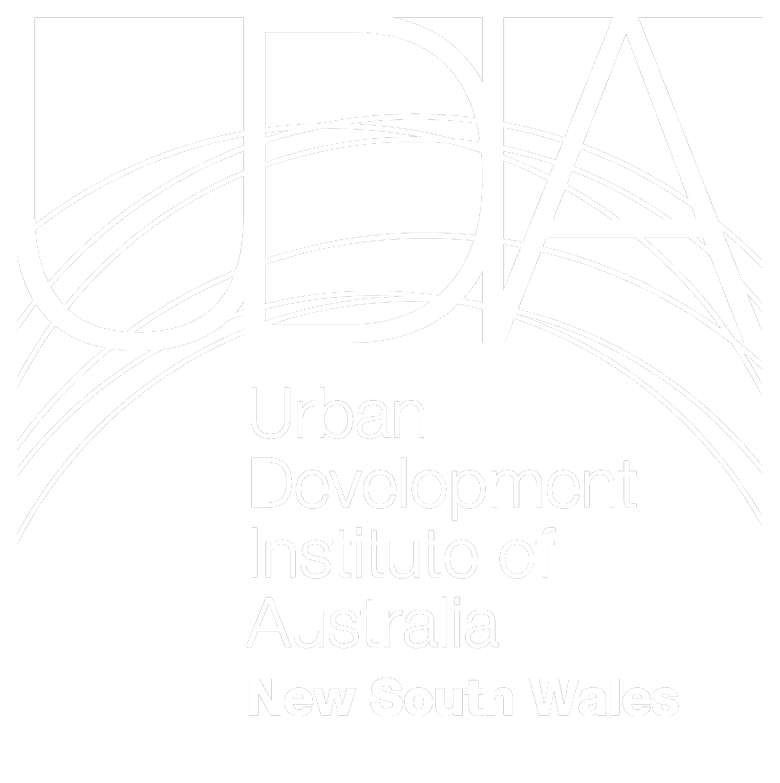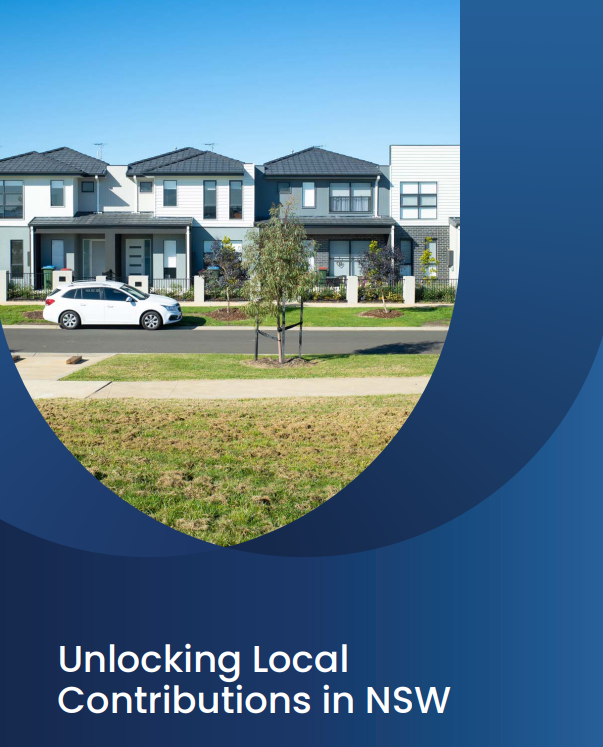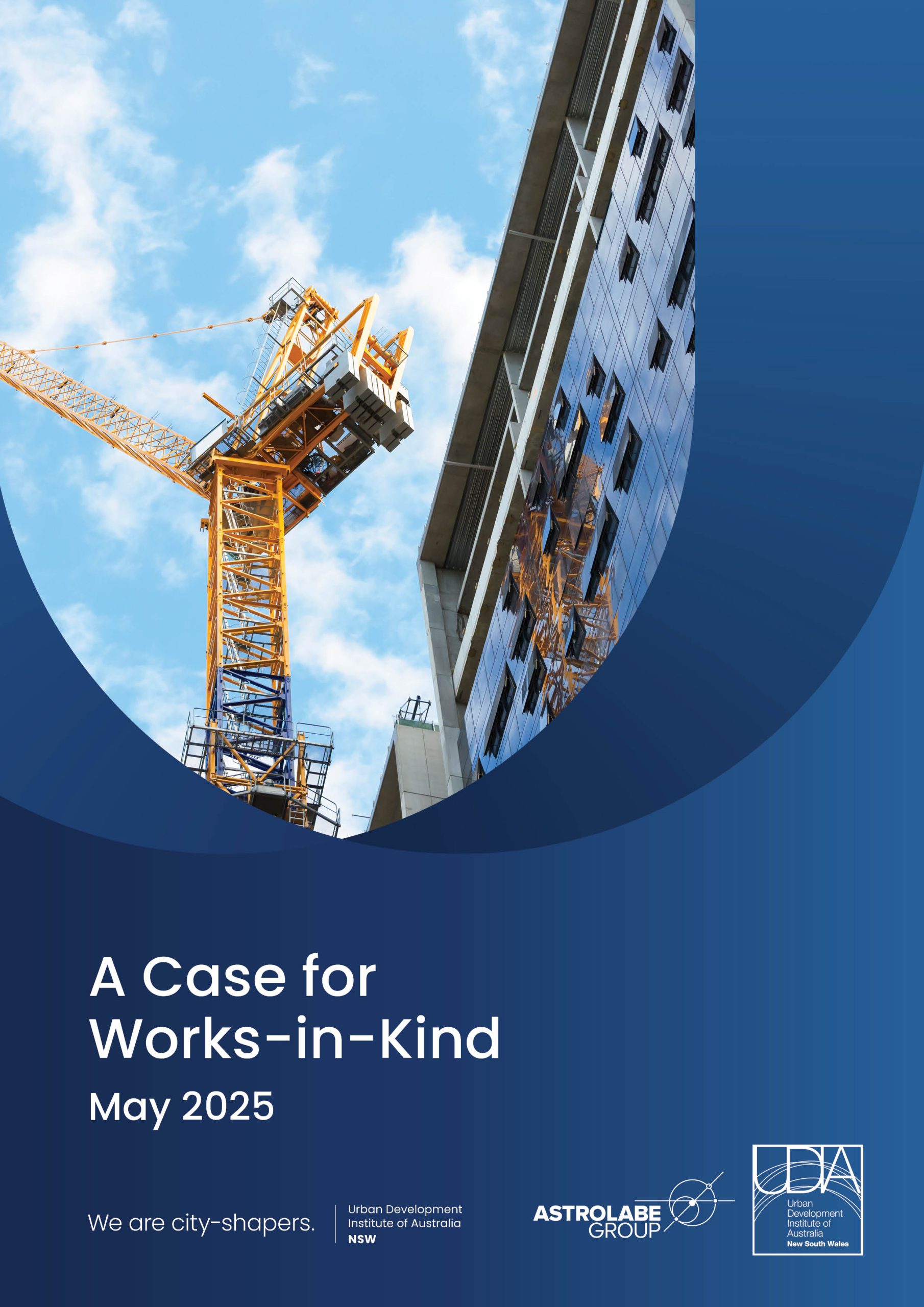Our research publications aim to provide you with critical insights into the residential market, leveraging bespoke data from key partners such as CoreLogic, Mecone, Astrolabe, ADW Johnson, URBIS, Oxford Economics, REA Group and Western Sydney University, as well as the industry expertise of our Committees and Members.
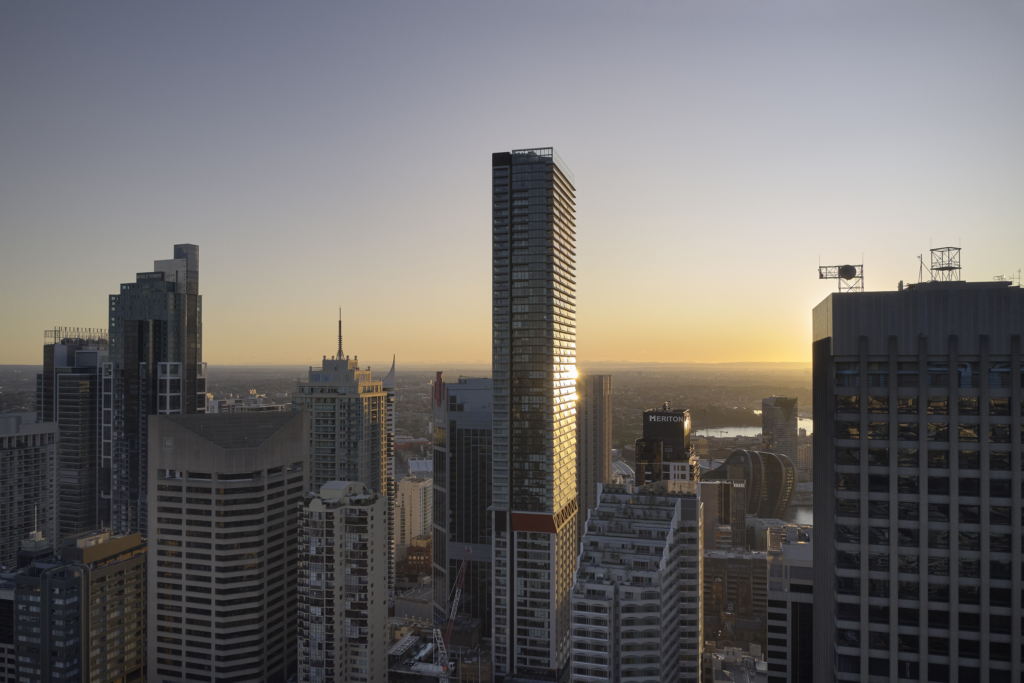
Unlocking Local Contributions
This landmark report calls for urgent reform of the local developer contributions system in New South Wales.
The report, Unlocking Local Contributions to Unlock Housing Supply, is a joint project of UDIA NSW and Urbis, and it shines light on one of the most significant yet overlooked barriers to boosting housing supply.
Local contributions have been accumulating faster than they are being spent in almost a decade, which further highlights the current system’s failure to convert funding into real-world infrastructure.
The report proposes a practical reform agenda to make local contributions more transparent, strategic, and equipped to support future growth.
A Case for Works in Kind
Developers have been waiting 18 months since the start of the new contributions scheme for a WIK policy which would allow them to deliver critical housing enabling infrastructure.
While development feasibilities are challenged, we know there are feasible projects in the market that just need basic enabling infrastructure to start.
Without infrastructure investment upfront, development stalls but the current Housing and Productivity Contribution (H&PC) scheme only collects funding from development after approvals, creating a critical funding gap. A Case for Works in Kind prepared by Astrolabe for UDIA NSW, draws from consultation with NSW Government agencies and key industry and council representatives. It identifies 5 recommendations that can optimise WIK as a mechanism for more efficient infrastructure delivery.
These recommendations are informed by agency perspectives and an understanding of the challenges and opportunities that NSW faces in the current housing crisis. If implemented, we believe these recommendations will make a marked contribution to the NSW Government’s ambitions for housing and productivity.
We have been engaging with Government on the establishment of a WIK policy over the last 12 months and will commence a new round of engagement in coming weeks to share the recommendations of our report and advocate for WIK policy to be included in the June State budget.
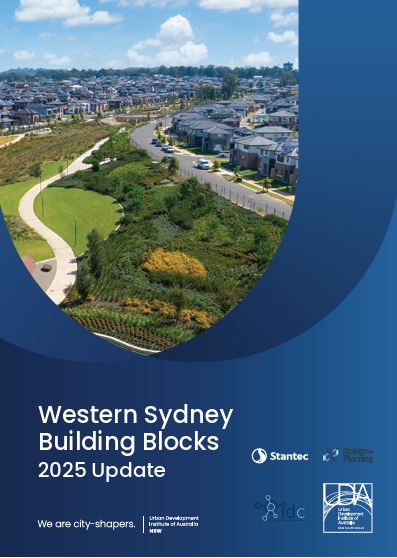
Western Sydney Building Blocks 2025
UDIA’s Western Sydney Building Blocks Report identifies
the infrastructure delivery sequence needed in the
near term to unlock the delivery of lots across key
growth areas in the West. Building Blocks identifies
the catalytic infrastructure needed to unlock new
housing through a combination of extensive industry
engagement and survey work and publicly accessible
data and information from the NSW Government
and the Department of Planning, Housing and
Infrastructure. The 2025 update of Western Sydney
Building Blocks was prepared in collaboration with
IDC, Stantec and Design+Planning and details the
progress made toward delivering key and enabling
infrastructure since 2021, when the last Building Blocks
Report was published.
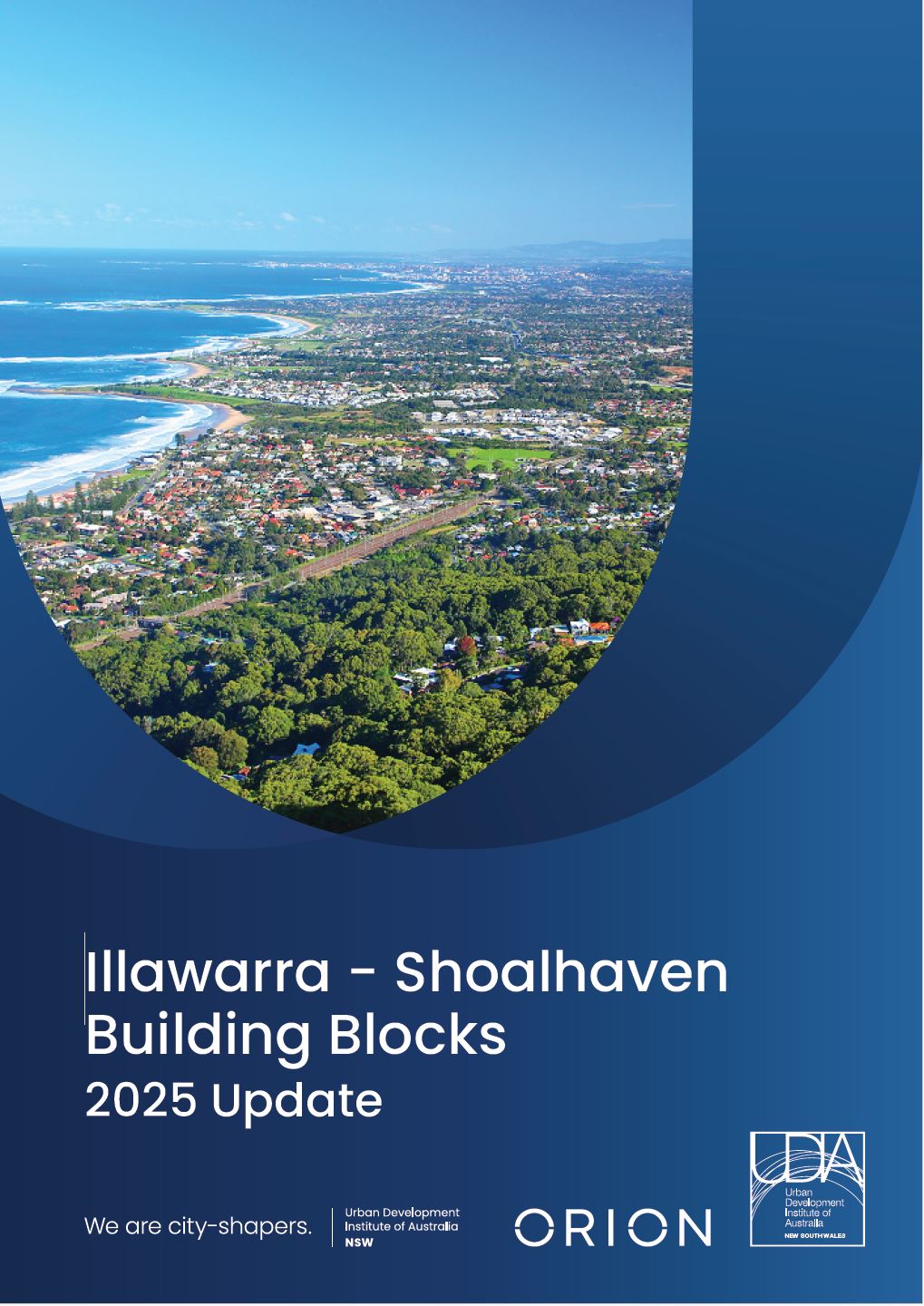
Illawarra Building Blocks 2025
This year, UDIA’s Building Blocks Illawarra-Shoalhaven
focuses exclusively on housing that could be delivered
over this five-year period which has outstanding
infrastructure constraints. Our research concludes
that with an investment of $400 million, there is the
potential to unlock 13,510 homes across the Illawarra-
Shoalhaven region in the next 5 years (or 72% of the
housing pipeline).
We believe the rest of the pipeline is either on track
with its infrastructure delivery or will make use of new
planning pathways or reforms and therefore have not
been identified.
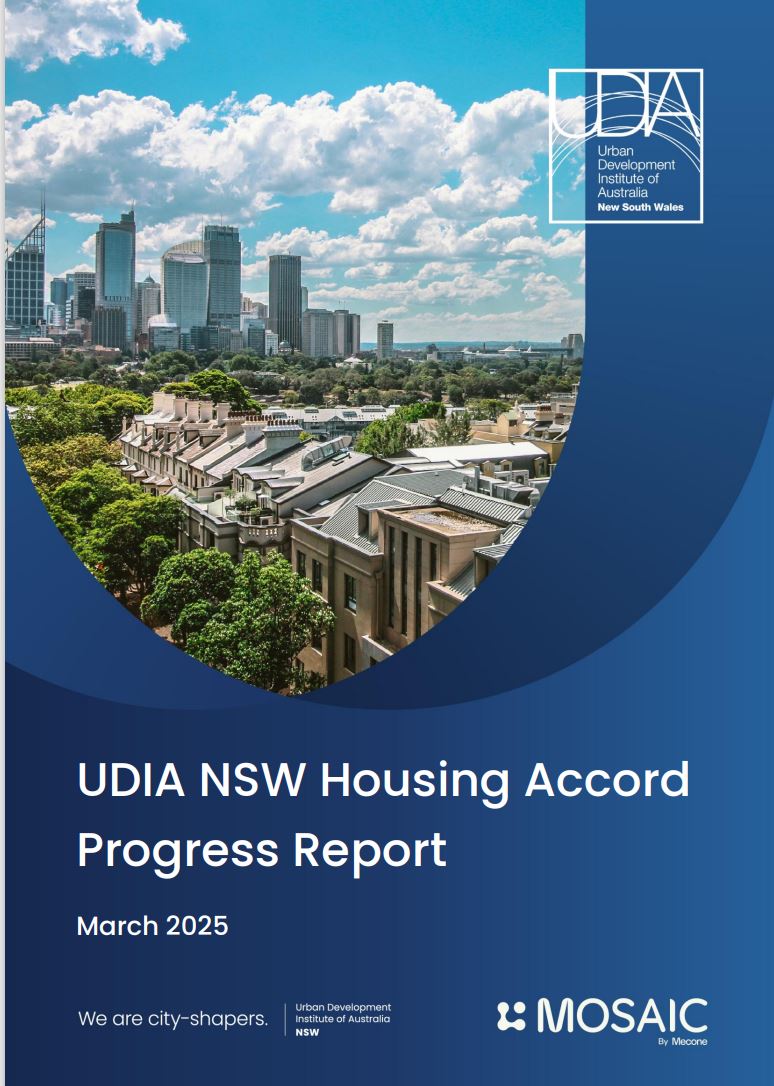
NSW Housing Accord Progress Report Second Edition
This UDIA NSW Housing Accord Progress Report, is the second report in a series of analysis tracking NSW’s progress in meeting the National Housing Accord target, of 322,000 new homes across the Greater Sydney Mega Region.
UDIA’s first report (released in October 2024) indicated that NSW had started slowly in meeting its Housing Accord targets, showing a 25,300 approvals shortfall. In this second report, as of March 2025, Greater Sydney is now tracking 30,000 approvals behind its target to date, which Is 22% below where it should be at this point in time. Our analysis indicates that the gap between housing needs identified under the Accord, and the supply that is progressing through the planning and building system, is likely to remain below target and continue to track downwards by the conclusion of the Accord period in June 2029. This is despite recent planning reforms in NSW, including new Transport Oriented Development (TOD) precincts and the implementation of the Low to Mid-Rise Housing Policy in late February 2025. These have clearly yet to have material impact on the ground, with this report still showing minimal uptake.
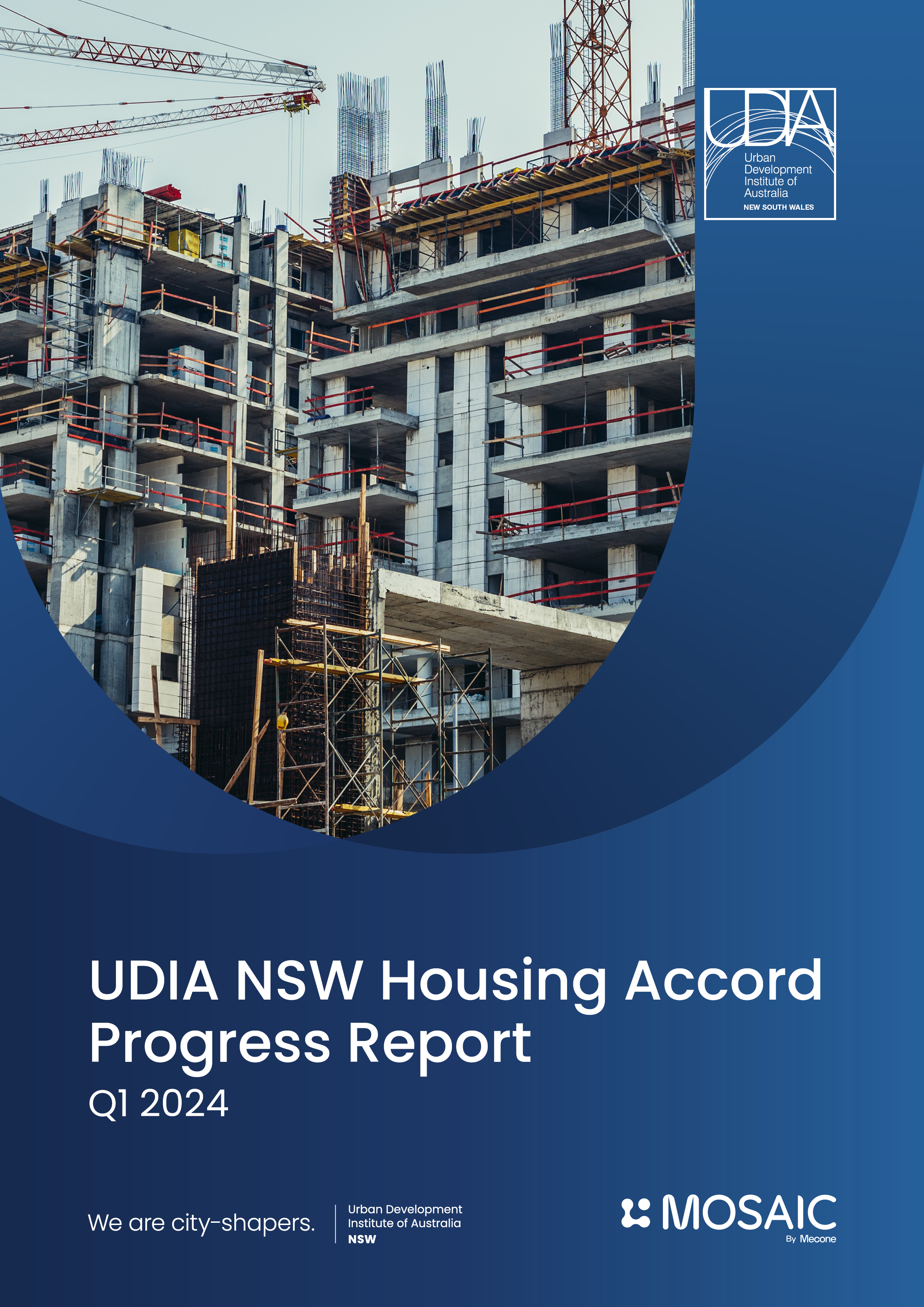
Housing Accord Progress Report Q1 2024
More than six months into the National Housing Accord period, UDIA has released its first NSW Housing Accord Progress Report which shows 60% of Local Government Areas are falling behind the number of approved development applications (DAs) needed to deliver their housing targets.
The report, developed in collaboration with planning and development consultancy Mecone, measures progress against the state’s share of the Housing Accord target by tracking the number of DAs determined across the Sydney megaregion – Sydney, the Lower Hunter and the Illawarra Shoalhaven.

Central Coast Building Blocks 2024
The NSW Government has given the Central Coast a 5-year Housing Accord target to deliver 9,400 new completed homes by 2029 which assumed 5,900 dwellings will be delivered because they are already in the planning system.
UDIA partnered with ADW Johnson to update the UDIA Central Coast Building Blocks Report for 2024 which identifies about half of the 9,400 Housing Accord target are in 13 development areas that together could supply 4,786 new dwellings in the next 5 years if a total of $53.4m in enabling infrastructure is delivered. About half of that cost still needs a funding commitment
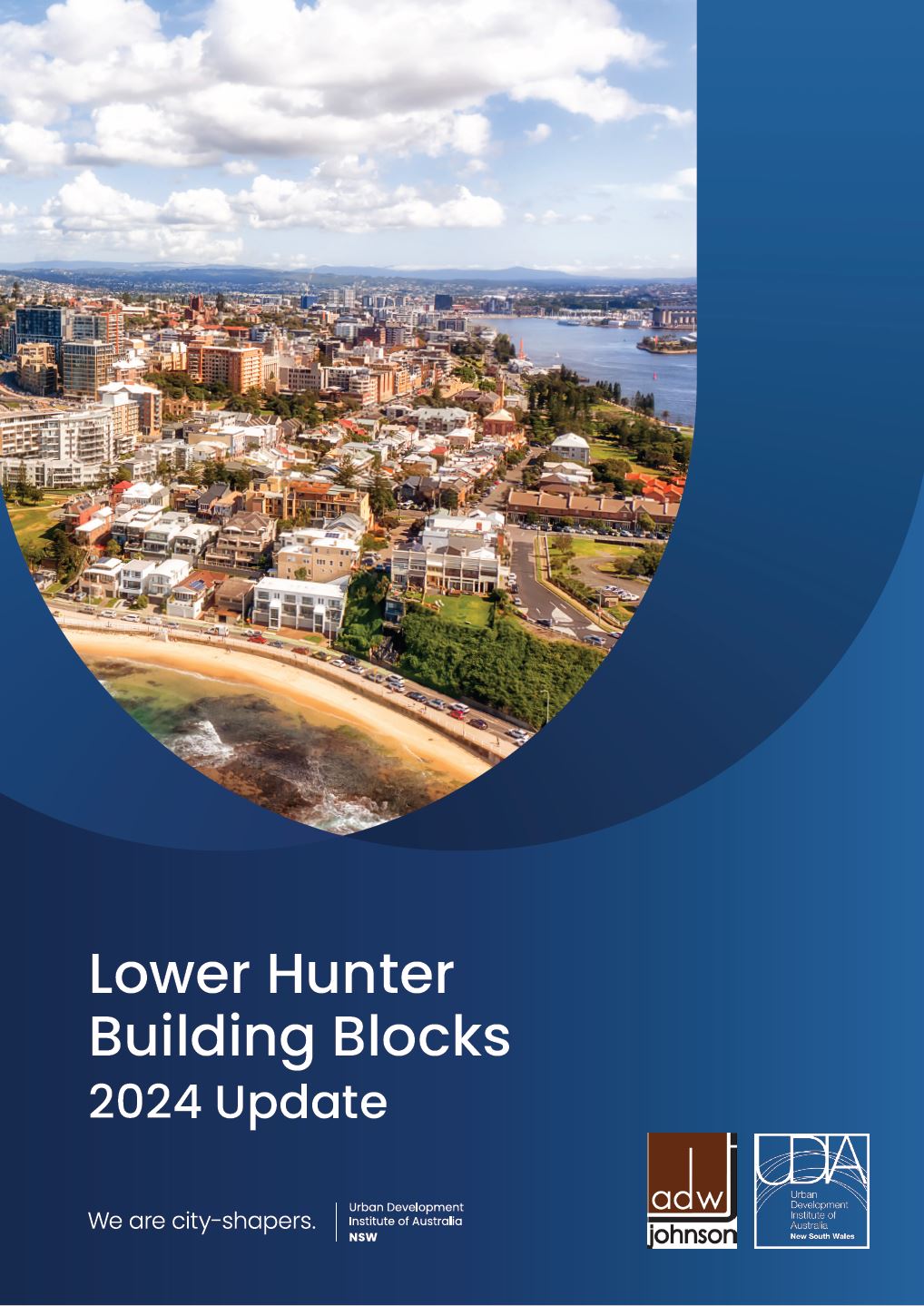
Hunter Building Blocks 2024
UDIA’s 2024 update to its Lower Hunter Building Blocks Report shows where targeted Government investment in enabling infrastructure is needed to help the region reach its Housing Accord target of 30,400 new homes in the next 5 years.
Upfront Government investment of $420 million over the next 5 year would enable infrastructure to be funded early so that it can be planned, designed and constructed to help unlock 28,915 new dwellings, or 95% of the region’s combined Housing Accord target.
This investment of $420 million, or just $14,000 per new dwelling, will pay for itself. We need to rethink our infrastructure funding model and have Government make an upfront investment in the infrastructure needed to unlock housing with the contribution coming after the housing is delivered.
UDIA National Housing Pipeline® – NSW Report
The findings of the UDIA National Housing Pipeline ® (NHP) – NSW Report show that only 171,400 homes are forecast to be completed during the five-year Housing Accord period. This represents a shortfall of 150,600 homes across the Sydney Megaregion.
The NHP forecast is a combination of UDIA’s developer intentions survey, CoreLogic’s Cordell database, and the Department of Planning, Housing and Infrastructure’s Sydney Housing Supply Forecast.
The timing of this report being released early in the Housing Accord period, provides Government time to implement additional interventions to remove constraints and increase the amount of homes industry can deliver across the Accord period.
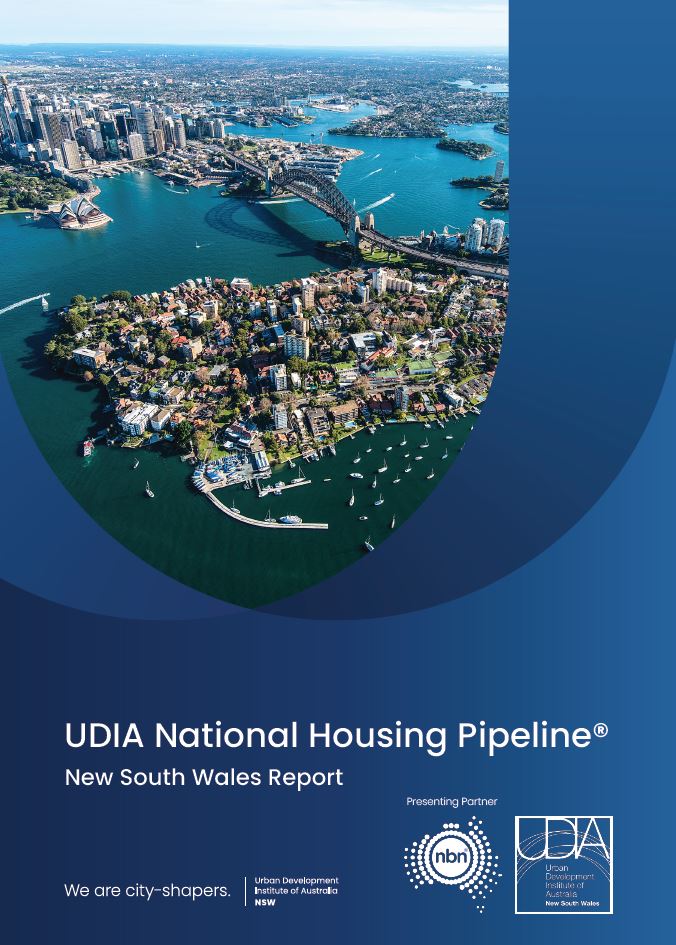
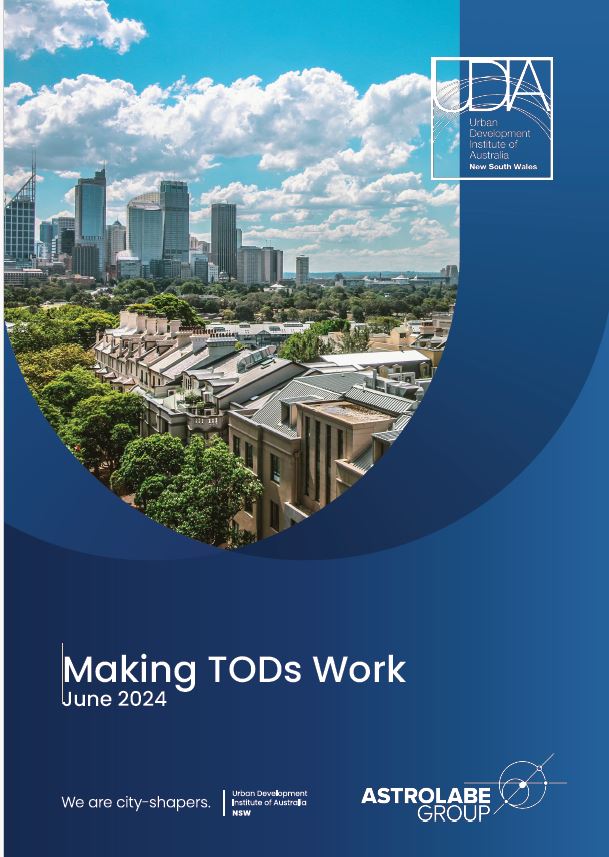
Making TODs Work
Under the National Housing Accord, the NSW Government has committed to the delivery of 377,000 new well-located homes between 2024-2029.
UDIA and the broader development industry are key delivery partners to achieving this goal.
To better understand the capacity of the TOD SEPP, to deliver medium density housing around identified Tier 2 Stations, UDIA engaged Astrolabe Group to prepare a high-level feasibility analysis – the Making TODs Work Research Report.
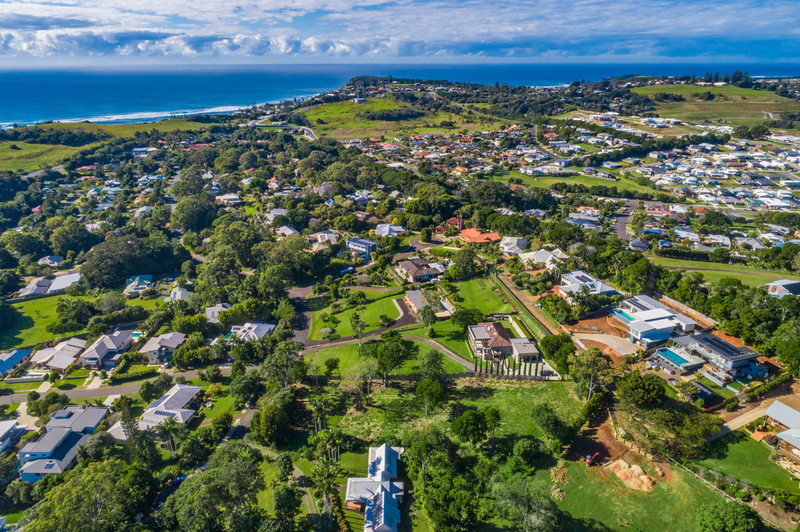
Greenfield Land Supply Pipeline Report 2022
- UDIA’s survey of greenfield developers revealed the constraints holding back development across the Sydney Megaregion (Illawarra to the Lower Hunter). It outlined the significance of getting a pipeline of development ready land in important greenfield growth areas, and the ramifications on affordability and accessibility if the undersupply issue is not addressed quickly. Key Findings
- 89% of lots expected in the next 8-year pipeline are not ‘development ready’
- There are over 20,000 lots of undersupply expected to cumulate by FY30
- Developers identified Sewer Infrastructure as impacting more lots across the Megaregion than any other constraint
Apartment Supply Pipeline Report 2022
UDIA’s Apartment Supply Pipeline Report 2022 includes:
- An overview of the current state of the NSW apartment market
- A survey of Apartment developers to understand the constraints holding back high-rise developments, of which 92% reported at least one constraint impacting supply
- An outline of apartment supply in the future pipeline, which is inadequate to reverse the growing apartment backlog in NSW, potentially reaching as high as 60,000 in the next 2 years
- Policy recommendations to address the severe housing shortage
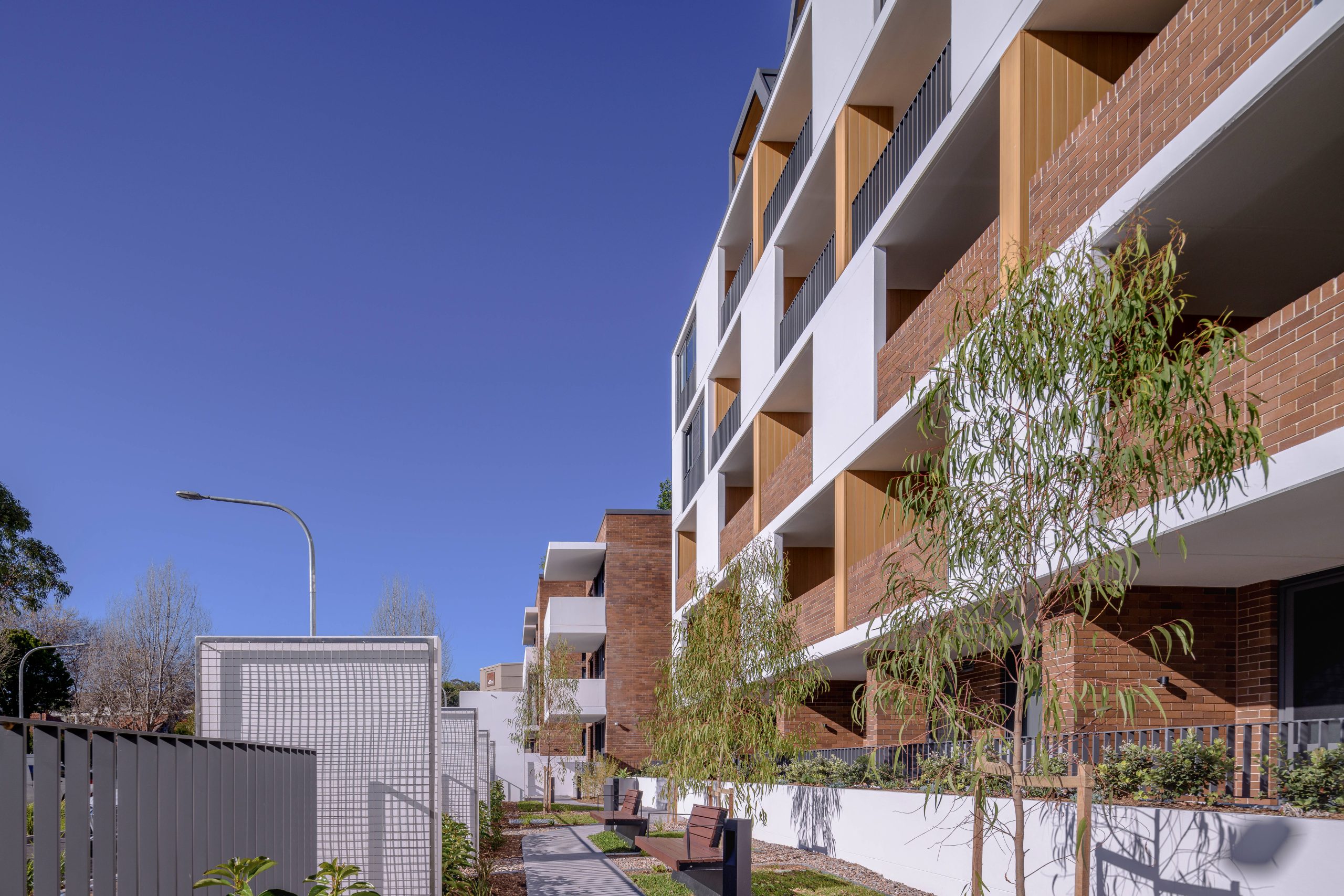
Special Topic Publications
South West Sydney Rail Link Extension Report
An Accessibility-Oriented Case for City Shaping Infrastructure The proposed South West Rail Link (SWRL) Extension provides a great opportunity to better link the West with the West and further support the Aerotropolis as the new city in Greater Western Sydney. UDIA contends that cities and centres must be built on access, as a way to bring jobs and homes closer and an opportunity to maximise public transport use. Read our research conducted in collaboration with Professor David Levinson from the University of Sydney.
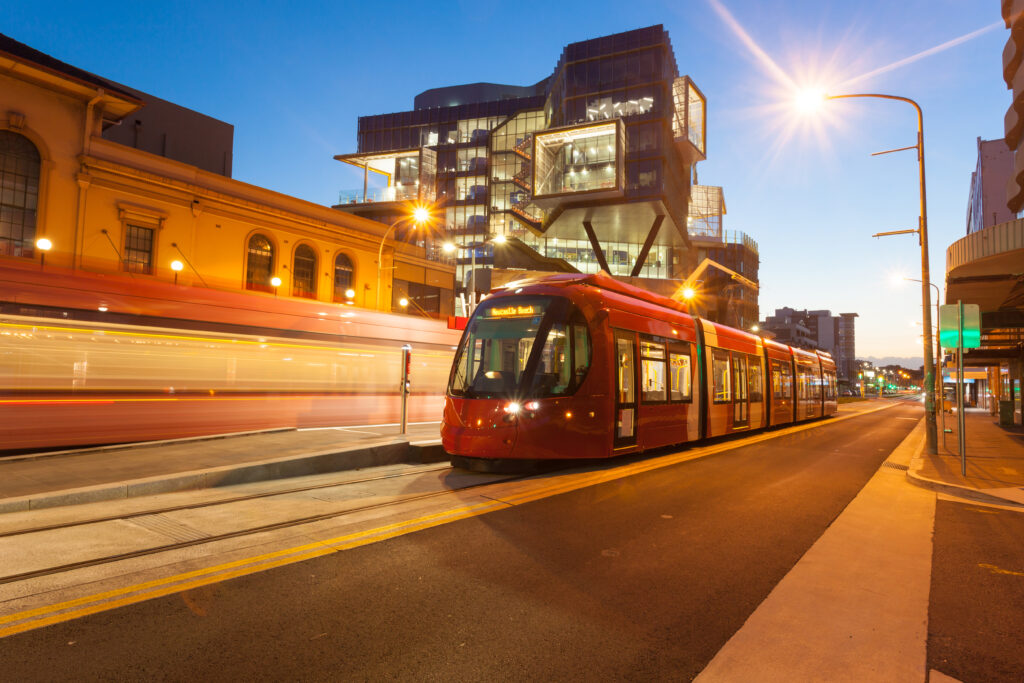
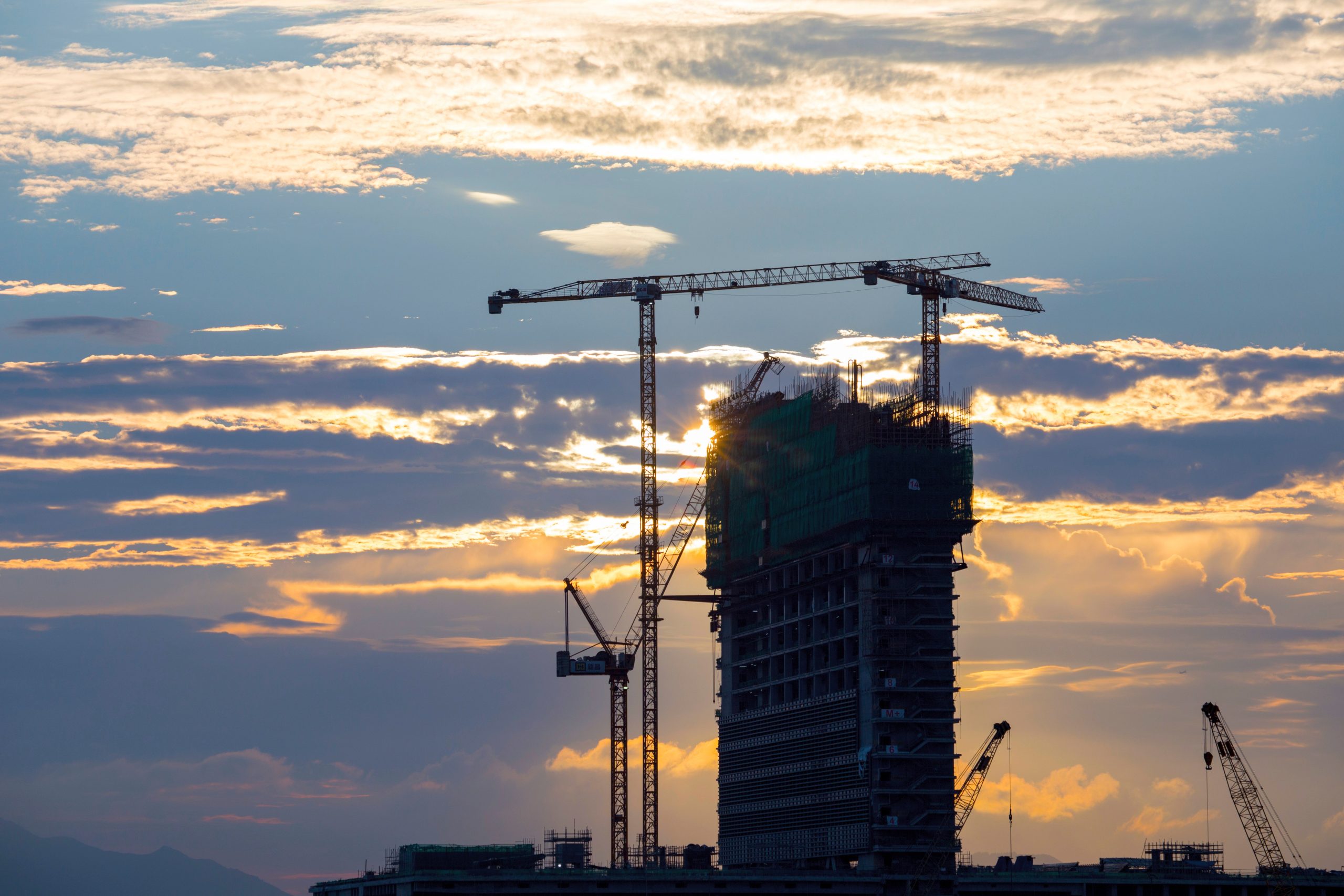
Issues paper on the NSW Biodiversity Offsets Scheme
UDIA NSW acknowledges the release of the report from the Upper House inquiry into the Biodiversity Offsets Scheme (Scheme) and believes that the Scheme is not working, neither for biodiversity nor development.
Urban Development Institute of Australia (UDIA) NSW is increasingly concerned that the current system regulating biodiversity conservation in NSW is overly complex and undermines government’s strategic goals for conservation, housing and jobs because of the uncertainty built into it.
